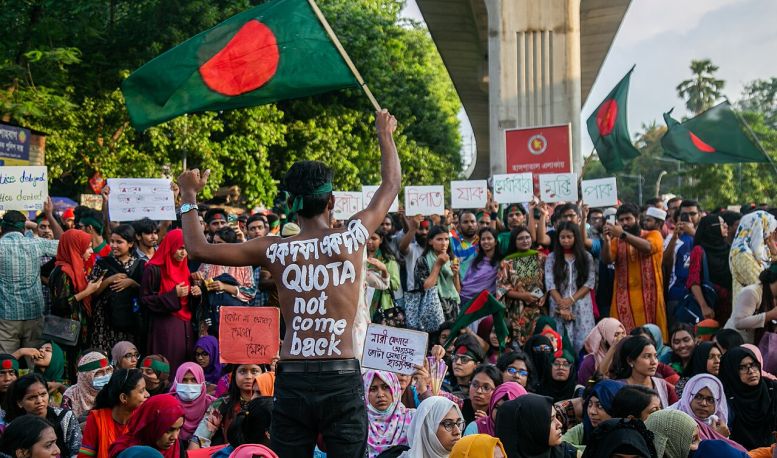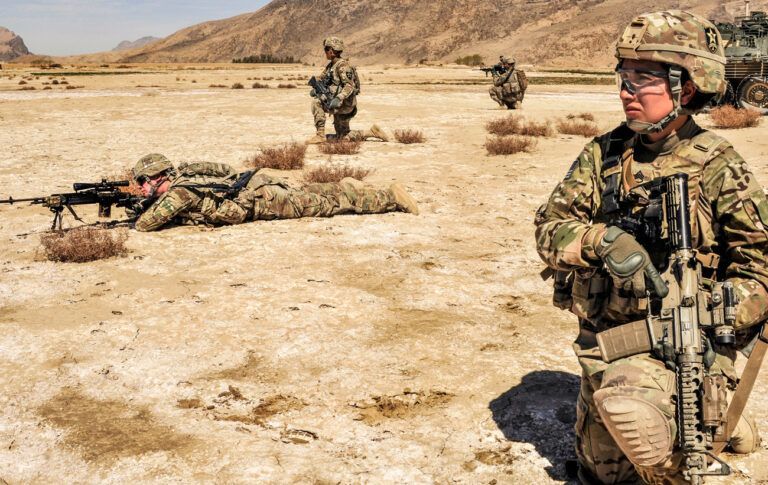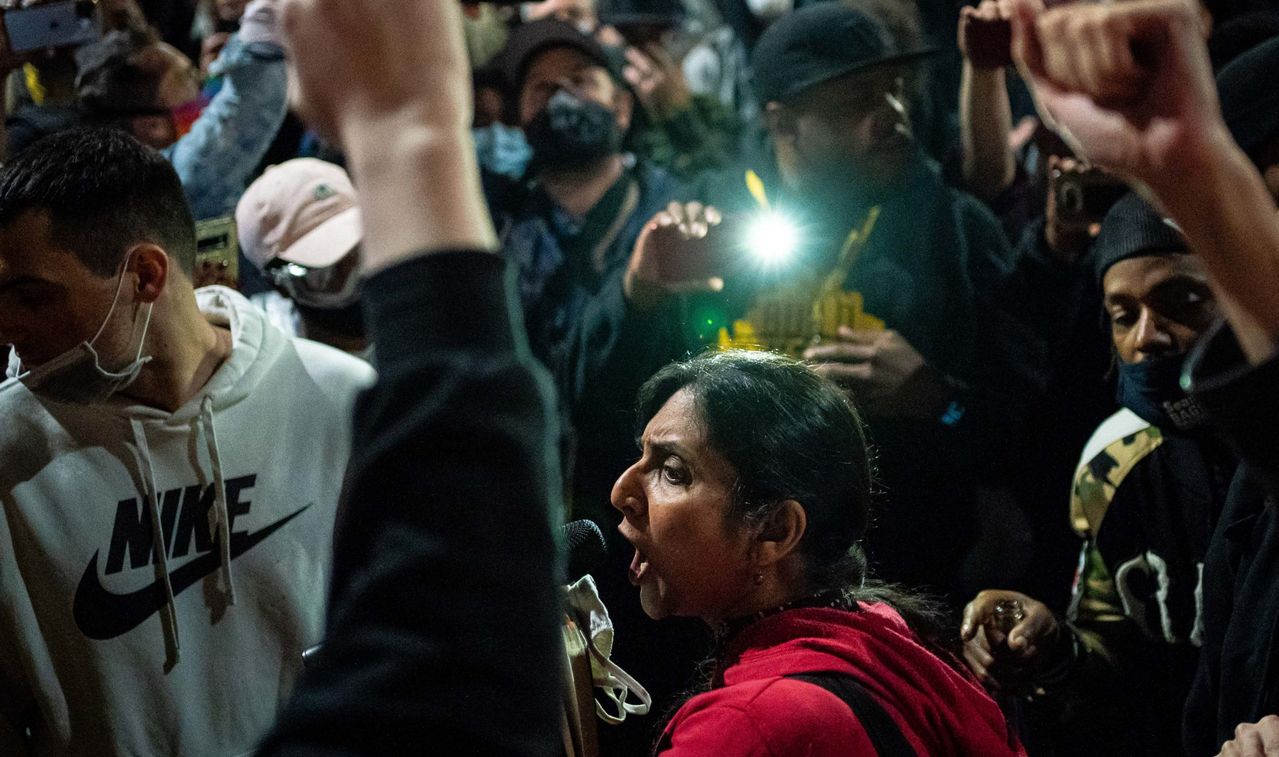“Interim” capitalist government prepares clamp down
The mass struggle in Bangladesh is at a decisive point. A month after the mass movement forced Prime Minister Hasina to resign and go into exile, a confrontation is building up between a rising wave of workers’ strikes and the new government, representing the capitalist owners of multinational businesses.
“The interim government warned of tough steps against anarchy as around 200 factories suspended production yesterday amid labour unrest in Gazipur, Savar and Ashulia”, the Daily Star reported, Sunday, September 8. An emergency meeting of ministers, police chiefs and intelligence officers was held the same day. “Stern action has to be taken against certain people in order to save factories, workers and the economy. We discussed it,” a government adviser told the news outlet.
Strikes spreading
Last week saw a sharp upturn in workers’ protests in the dominating garment industry, with overwhelmingly women workers, but also in pharmaceuticals and shoe factories. This has involved strikes, which are spread through marches from one factory to others, blocking roads, and mass protests at offices of companies and authorities. The movement and the methods are clearly inspired by the mass movement with revolutionary features this summer.
Many companies have closed their factories, after advice from the police. Over the weekend, “police, army and border guards were deployed” to ensure production can start again. The police also try to “identify and arrest those causing unrest.” The government and companies blame “outsiders,” but the government adviser admits “it was hard to tell the workers from the outsiders.”
Another website, bdnews24.com, used the headline “What’s driving the sudden surge in workers’ protests at Bangladesh clothing industry?” commenting that “Out of the blue, garment workers are making demands that no one has ever heard before.”
“Sharmin Group, one of the larger garment factories in Ashulia, employs around 20,000 workers. After two consecutive days of attacks on the factory gate, the factory was declared closed. A list of 20 demands has been submitted to the factory authorities, with most of the demands being new to the industry.”
Wages, maternity leave and nationalisation
At other workplaces, lists with 10 to 15 demands have been presented. These lists include 15–20 percent wage rises, increases for overtime and night shifts, lunch and transport allowances, health treatment but also transport of the body if a worker is diseased, maternity leave and pay, grade promotion for permanent employees every two years, bonuses and days off during Eid, and an end to workplace harassment and victimization (including blacklisting).
A main issue causing strikes is unpaid wages in many factories. The conditions are not new; brutal super-exploitation of Bangladeshi workers has existed for years and is indeed the basis of the “economic miracle” of Bangladeshi capitalism which has drawn in the multinationals. It is the impact of the mass struggle that has emboldened workers and poor masses to refuse to swallow these injustices any longer and take the road of militant struggle.
A new demand for more male workers to be employed in the garment industry is a result of rising living costs. In many families, women textile workers are the only ones with an income. The demand raised underlines the need for two incomes.
To protect jobs in a period of factory closures and cuts, the demand for nationalizations have been raised. This is a key demand in a country with so many multinational companies and subcontractors, and should be linked to building up workers organizations which can lay the basis for workers’ control of industry.
In some cases, companies have made promises but not fulfilled them when work has resumed. In general, the capitalists are biding their time and threatening the protests. As one news media reports: “Mohammad Hatem, president of the Bangladesh Knitwear Manufacturers and Exporters Association, said some demands were “illogical (…) If they come with just demands, we can discuss this on the table but they are taking to the streets instead,” said Hatem, blaming “interest groups” wanting to damage the industry, without giving further details.
Escalation
Over the last week, strikes and protests have continued to escalate. They push for immediate responses to their demands and refuse to go back to work despite threats and factories being closed. Experience from other workers’ struggles and mass movements shows this can not go on indefinitely — new steps in the struggle are necessary.
What is needed for the strike movement is to be democratically organized and coordinated. There is not only a risk of police intervention, but even more critical is the lack of adequate working-class organizations and leadership. The trade unions, which only organize 5 percent of the country’s workforce and are in most cases controlled by the two main pro-capitalist political parties (Hasina’s Awami League and BNP), openly say they “don’t have resources” to organize meetings in the factories and some union leaders have questioned the current movement.
No experienced leadership and real organization creates a vacuum that can be filled by other forces and sow confusion. For example, corrupt politicians are fighting to keep their influence, for example over the lucrative “jhoot” business, which is sales of garment fabric waste. There are also NGOs, many foreign funded, that have an unfortunate track record of opposing “politicization” and derailing struggles into “compromise.”
The mass movement initiated by student protests against the quota system in a short time became a revolt against the autocratic and corrupt government, culminating with hundreds of thousands participating in the “Long March to Dhaka” on August 5. When repression failed — despite killing hundreds of protesters, injuring over 20,000 and arresting 11,000 — the military advised sheikh Hasina to step down and the generals established a new government in order to keep control of the situation on behalf of the capitalist class.
The new government
The movement of the students included physical confrontations with the police as well as with thugs from the student wing of Hasina’s Awami League. Mass protests burned down police stations, protested at the homes of Awami leaders, defied curfews, the locking down of the internet and transport systems. These explosive struggles and the appearance of victory, at least in defeating the most openly reactionary face of the capitalist system, clearly have inspired the present workers’ protests.
The mass protest of the student movement also interrupted production in the country’s garment industry, which accounts for 85 percent of exports, second only to China in global textile exports.
The task of the new government, therefore, is to “restore calm” (ie. control), concluded the global capitalist establishment think tank International Crisis Group. “The interim government will need to quickly restore confidence in the economy and, in particular, get the garment sector — which accounts for 85 per cent of the country’s export earnings — back up to speed.”
Their advice to the military, who in a very short time organized the new government, was “without the students’ support, the interim government would have had limited credibility and may even have faced fresh demonstrations.” The ICC continued: “they also need some experience on their side, they have nominated Nobel Peace Prize winner Muhammad Yunus, the micro-credit pioneer and veteran civil society figure, to lead the interim government.” The ICC also advocated abolishing the constitutional rule to hold new elections within 80 days. In fact, just two weeks into his rule, Yunus said he would not be tied to any timeline for elections and stressed that he must first carry out “vital reforms.”.
The struggles that ended Hasina’s regime have no doubt given confidence to the workers. But the fundamental contradiction of the “July revolution” is that despite many hugely progressive and important features in terms of organization and heroism, the struggle has resulted — at least for now — in the coming to power of a government that is the preferred choice by international and domestic capitalists, to keep and restore the order of the system.
As advised, two student leaders joined the government — as ministers for Post, telecom & IT, and Youth & sports — to give it greater credibility among the masses. Other ministers included a former brigade general and a former governor of Bangladesh Bank. Yunus himself rules 27 departments, including Defence, Education, Food, Textiles and Women. This is not a government of the July revolution, but a government of continued capitalist exploitation. The mass movement can have no illusions in it, and fight for a revolutionary government based on the working class and poor masses.
The mass struggle in Bangladesh has sent a warning to the capitalists and multinationals everywhere, as a sign of the social explosions that can erupt in every part of the world in this new era of crisis. The roots of the mass revolt exist are common to many other countries: high inflation and price hikes, unsecure jobs, long working hours and rising unemployment and an increasingly authoritarian government. Imperialism, through multinational companies has for decades exploited a growing working class in Bangladesh. However, high economic growth has in no way benefitted the workers producing the wealth. The change in government has given a temporary feeling of freedom, but not changed the fundamental conditions.
A democratic stage?
Like many protest movements in other countries, a seemingly limited issue — job quotas — rapidly developed into a movement against the government and state forces. The initial demands against the quota were more or less implemented when the court (i.e. the government) retreated in mid-July. But by then, the demands were directed against the government and its state forces’ mass repression against initially peaceful demonstrations. The key demand from the end of July was for the government to resign, the release of arrested student leaders and for police officers responsible to be arrested. When the government offered talks, the momentum was such that the student leaders refused to participate.
The movement also showed how demands can be implemented — from below, not waiting on the government or courts. They demanded a ban of the ruling party’s student wing, the Chhatra League, but had already driven that organization out of many campuses, declaring them “Chhatra free.” And the movement did not restrict itself to universities and colleges, but marched in the cities, blocked highways and railways.
The Bangladesh July protests shared many more features with revolts in other countries. It was led by young people, students, with many young women in the front line. They were joined, first by teachers, then lawyers and broader layers of workers. State repression soon became the most important issue overshadowing others.
This movement shook the ruling class. The following directions were given from the students movement August 3, an ultimatum for the government to resign: non-payment of taxes and utility bills, closure of all institutions (courts, offices) and an appeal to stop all work in ports, collective transport and factories. They even called for a halting of remittances from abroad, an important source of income.
Following the victory against the government, even the hated police force went on strike August 6 – 11, in an attempt to avoid reprisals and put the entire blame for its actions on the government.
The movement in Bangladesh has some of the features of a political revolution — a mass movement forcing out an authoritarian government. However, as so many other historic struggles have shown, this can only be the beginning of a revolutionary process.
When president Mubarak was overthrown in Egypt in 2011, ISA emphasized the victory and the strength of the masses, but also warned against counter-revolution, in the context of the lack of an existing revolutionary political alternative. Imperialism and the military establishment, as in Bangladesh a key part of the capitalist class, will inevitably prepare for counter-revolution. The question of whether this will succeed depends on the degree of organization of the working class as the most revolutionary force in society, and it being armed with a fighting strategy and conscious socialist leadership. In Bangladesh today, this task begins by recognising that workers and students should not support or place any trust in the interim government of the US-backed capitalist leader Yunus.
The most important lesson for revolutionary struggles can be learned from the Russian revolution 1917. The February revolution overthrew the hated tsar, creating mass hope of change and democracy. This mass mood affected even leading Bolsheviks, including Stalin, who initially gave “critical” support to the new provisional government. Also today, Stalinists advocate a “stagist” theory, starting with a so-called “democratic stage” before supposedly fighting for socialism later. Lenin, however, pointed to the limitations of February, raised the need for the working class to build its own revolutionary party and take power through its committees, the soviets, in order to achieve peace, land and bread. The provisional government, based on capitalism and the tsarist state, would not fundamentally change society and instead as Lenin warned would become the “organizing centre” for counter-revolution.
In Bangladesh today, workers should raise the demand for a genuine people’s constituent assembly to replace the corrupt and elite-dominated House of the Nations. Such an assembly should have the power to take over the biggest companies under democratic public ownership and implement far-reaching social reforms: increases in wages and pensions, job protection and healthcare. This can only be won if the working class, supported by the students and other mass sectors, organizes to force the convening of such a new power from below, through the creation of workers’ factory committees, genuine mass trade unions and a working-class party.




